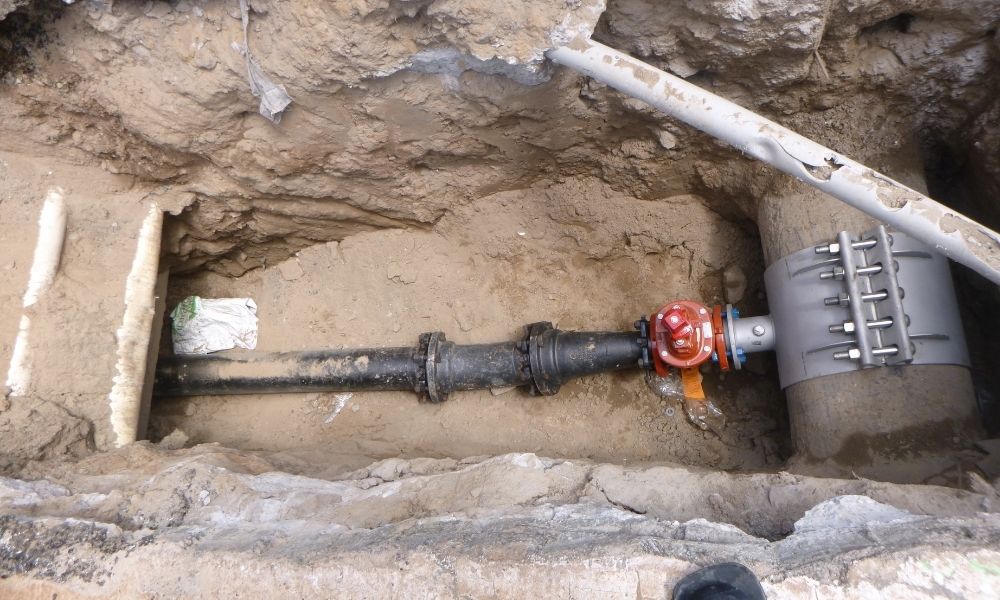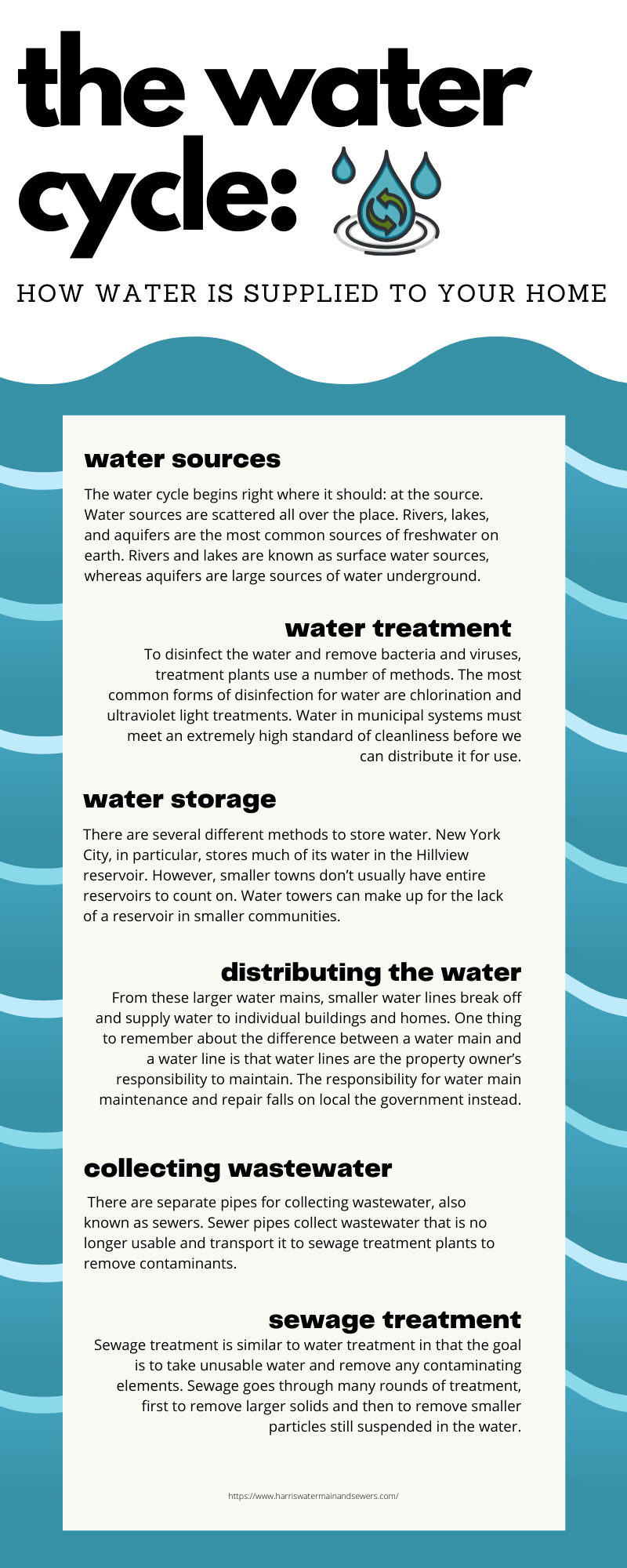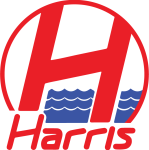We don’t often consider the water that we receive whenever we turn on a faucet, take a shower, or flush our toilets. Water infrastructure is such an integral part of modern life that most people don’t even realize the complicated systems that must be in place to get that water to their faucets. Without the work of thousands of water line, sewage, and plumbing professionals, potable water would be much more difficult to come by.
So where does it all come from? How do we continually have enough water to supply it to everyone who needs it? The answer lies in the water cycle that takes place whenever you use water in your home. This cycle includes gathering, cleaning, treating, distributing, and recycling water at various different stages. To introduce you to the idea a little more, we’ll take you through the water cycle and how water is supplied to your home. With this information, you might appreciate all the water you use just a little bit more.
Water Sources
The water cycle begins right where it should: at the source. Water sources are scattered all over the place. Rivers, lakes, and aquifers are the most common sources of freshwater on earth. Rivers and lakes are known as surface water sources, whereas aquifers are large sources of water underground.
These water sources might seem finite. You can’t keep taking water out of a lake forever, right? That would be true if it weren’t for the water cycle. Rain and melting snow feed surface water sources. As we use up water, some of it returns to the atmosphere and comes back down in the form of precipitation—rain and snow—that refills the surface sources we use.
A vast majority of water in the United States is distributed through municipal water systems that take from either surface sources of water or underground aquifers. In more remote areas of the country, homes and businesses often use private wells instead, as it is more difficult to set up a proper distribution system over larger distances.
New York City’s Water Sources
New York City has one of the most robust and complicated water systems in the country. It gets its water from three major sources, all of them watersheds. West of the Hudson River, the Catskill and Delaware watersheds combine to form the majority of the source water for the city. These watersheds lie about 125 miles north of the city itself. A smaller portion of the city’s water comes from the Croton watershed, which lies to the east of the Hudson River.
Stormwater Sources
When storms roll in, all the water they bring down upon us goes back into the water cycle. In remote areas, a small portion of it is absorbed into the ground and eventually reaches the aquifers. In urban environments, this can’t happen because of the sealed streets and packed buildings. As such, the city builds storm drains into streets to gather stormwater and redirect it back into lacks and rivers.
Water Treatment
Obviously, you probably won’t want to use water that comes directly out of the lake. This is where water treatment plants come in. Water in most systems will need to go through multiple stages of filtration and treatment before it’s potable. Filtrating the water multiple times removes larger debris and eliminates contaminants like algae and other larger suspended particles.
To disinfect the water and remove bacteria and viruses, treatment plants use a number of methods. The most common forms of disinfection for water are chlorination and ultraviolet light treatments. Water in municipal systems must meet an extremely high standard of cleanliness before we can distribute it for use.
Water Storage
Before we can talk about how water is supplied to your home, we must consider how different regions store water before its use. There are several different methods to store water. New York City, in particular, stores much of its water in the Hillview reservoir. However, smaller towns don’t usually have entire reservoirs to count on. Water towers can make up for the lack of a reservoir in smaller communities.
Distributing the Water
New York City has one of the most complex water distribution systems in the world, but the principles of distributing water don’t vary much from city to city. From local reservoirs, water is pumped through very large pipes that we call water mains. These water mains are the pipes that run beneath roads and sidewalks, and they are a large portion of what we work on here at Harris Main and Water Sewer Contractors.
From these larger water mains, smaller water lines break off and supply water to individual buildings and homes. One thing to remember about the difference between a water main and a water line is that water lines are the property owner’s responsibility to maintain. The responsibility for water main maintenance and repair falls on local the government instead.
Collecting Wastewater
Whenever you flush your toilet, take a shower, or brush your teeth, all that water you use must go somewhere. This wastewater obviously doesn’t travel back through the water lines, or it would contaminate everything. Instead, there are separate pipes for collecting wastewater, also known as sewers. Sewer pipes collect wastewater that is no longer usable and transport it to sewage treatment plants to remove contaminants.
Sewage Treatment
Sewage treatment is similar to water treatment in that the goal is to take unusable water and remove any contaminating elements. Sewage goes through many rounds of treatment, first to remove larger solids and then to remove smaller particles still suspended in the water. Some water even goes through tertiary treatment to make sure it is ready to release back into the environment.
Now that you have a better understanding of how much time and work goes into providing you with clean water, you might take another glance at your faucet or shower. If you’re looking for new construction plumbing contractors in NYC, Harris Main and Water Sewer Contractors is the company to talk to. We help ensure that the water cycle in New York City continues to supply clean water to every member of our community.






















